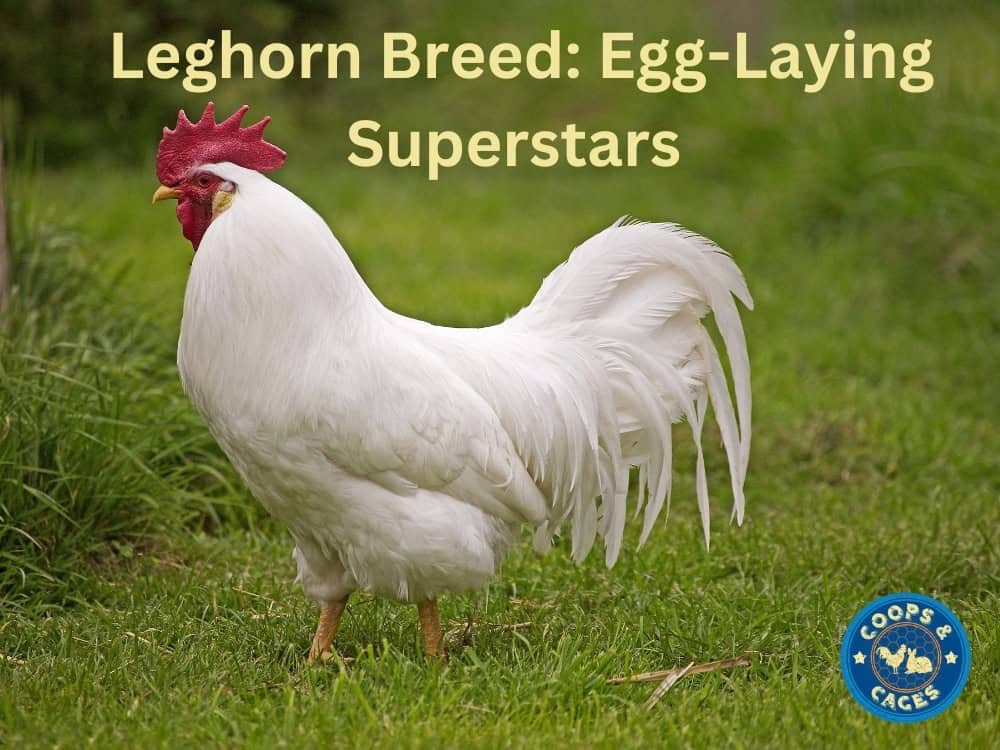Chickens
Leghorn Breed: The Egg-Laying Superstars
Ever wondered about the bustling, feathery world of the leghorn breed? These aren’t your average backyard chickens. With roots tracing back to beautiful Tuscany, Italy, the Leghorn breed has flown great distances to achieve global popularity among bird enthusiasts.
Their claim to fame? An astonishing ability to lay between 280-320 large white eggs annually. And it’s not just their productivity that’s impressive; with a sleek body and bright yellow legs, they are quite the lookers too!
If you’re thinking about adding some feathered friends to your family, why settle for less when you can have lively Leghorns exploring your yard?
What is the Leghorn chicken breed?
The Leghorn chicken breed is highly valued for its exceptional egg-laying capacity, adaptability, and efficient feed conversion. They are active, hardy birds that come in a variety of colours and are widely used both in commercial egg production and poultry exhibitions.
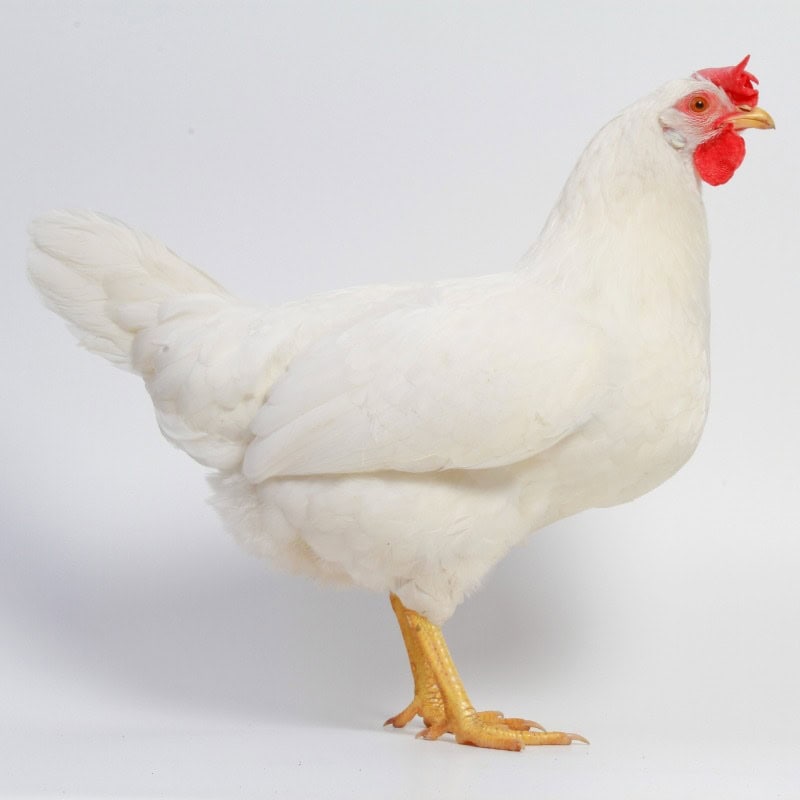
History of the Leghorn Breed
The Leghorn chicken is an Italian heritage breed that originated in Tuscany, Italy in the 19th Century. They were originally called “Italians” and were imported to Australia in 1872
Physical Characteristics of Leghorns
Leghorn hens have a sleek, streamlined look with an upright posture, striking white earlobes, and bright yellow legs and beaks. They are a smaller breed, with roosters weighing about 3 kg and hens averaging around 2 kg. They feature large and prominent combs, wattles, and earlobes, adding to their distinctive appearance.
Personality Traits of Leghorn Chickens
Leghorns are known for being active, alert, and somewhat flighty birds. They do a great job at finding their own food and enjoy roaming around freely.
While they can be friendly, they are generally not as docile as some other breeds and may not enjoy being handled extensively.
Farmers often choose Leghorn chickens because they lay lots of eggs consistently. Their tough constitution also makes them easy to care for in various climates.
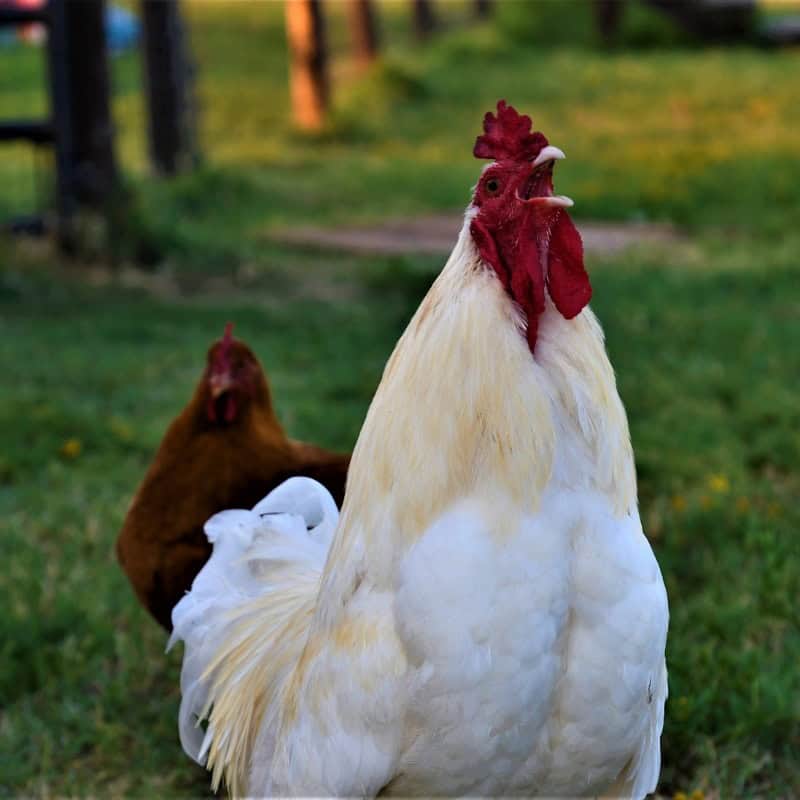
Leghorn Chicken Varieties and Colours
While white leghorn chickens are the most common variety, the leghorn breed comes in a range of colours and varieties.
White Leghorns
White leghorns are the most popular variety and are known for their pure white feathers. Their legs and beaks are bright yellow, while their earlobes stand out in white. White leghorns are the go-to choice for commercial egg production due to their high egg-laying abilities and feed efficiency.
Brown Leghorns
Brown leghorns have rich, dark brown feathers with some lighter brown accents. They also have white earlobes and yellow legs and beaks like their white counterparts. While you see fewer of them than white leghorns, these birds have good egg production and look lovely in any home flock setting.
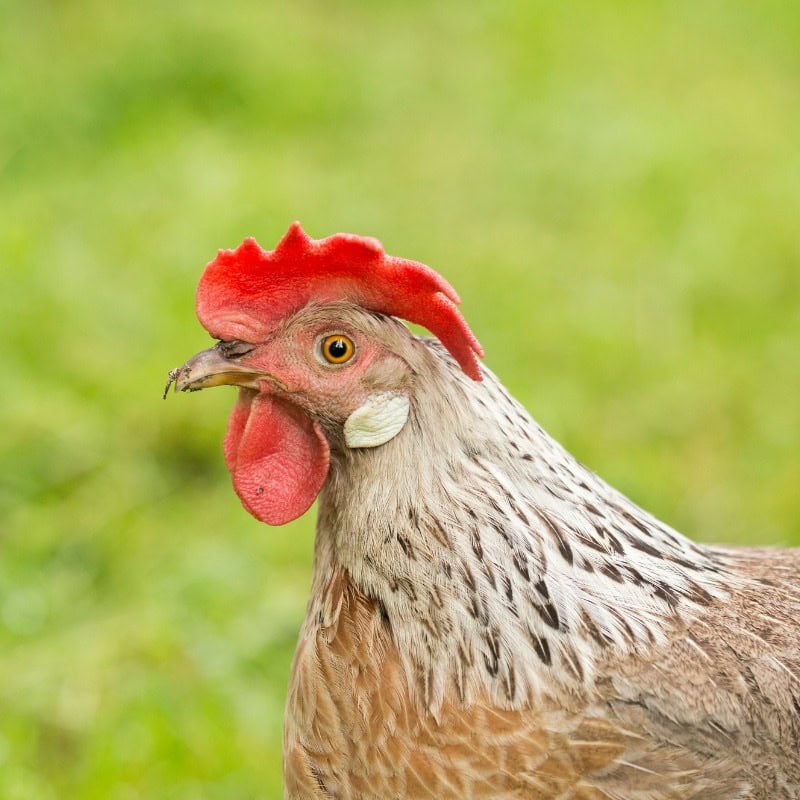
Other Leghorn Colour Varieties
In addition to white and brown, leghorns come in several other colour varieties, including buff, black, silver, and red. If you’re after more than just the usual white or brown leghorns, these less common varieties will brighten up your flock with their vibrant feathers.
Rose Comb vs Single Comb Leghorns
Leghorns can have either a single comb or a rose comb. Single comb leghorns have the classic upright comb with five to seven points, while rose comb leghorns have a low, broad comb that is flat on top with a slight peak at the back. Rose combs handle cold climates better and are less likely to get frostbite, so they’re a smart pick for chillier regions.
Bantam Leghorn Varieties
Bantam varieties of leghorns are smaller versions of the standard-sized birds, typically weighing about 1/4 to 1/3 less. If you’re tight on space but still love colourful birds, these smaller versions are ideal. They offer the same vibrant hues and fit well into cosy living quarters.
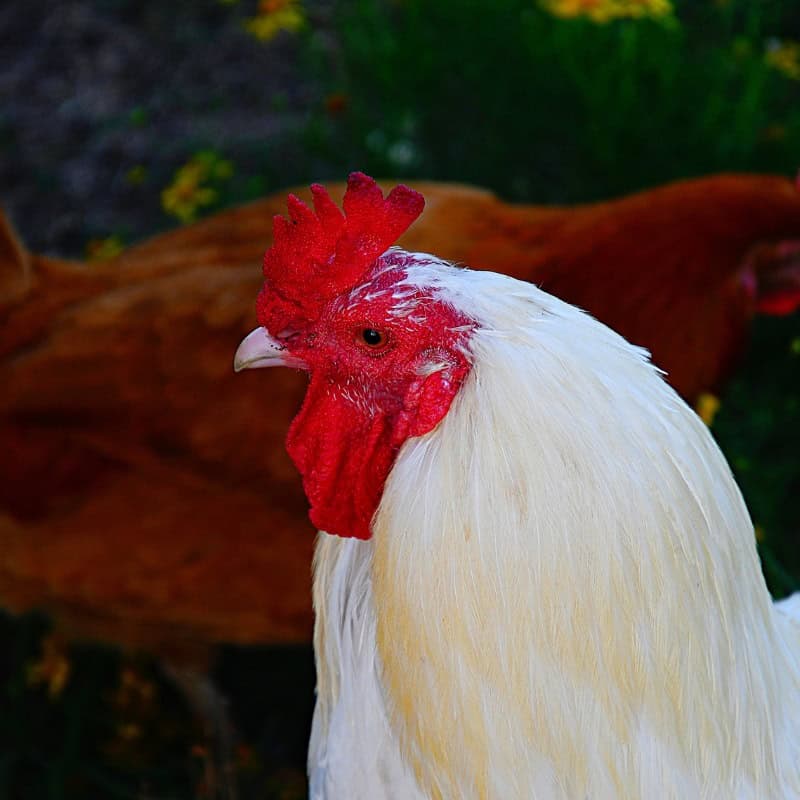
Leghorn Chickens as Egg Layers
One of the main reasons people choose to raise leghorn chickens is for their incredible egg-laying abilities. If you want a constant supply of beautiful eggs in your kitchen, these prolific layers have got you covered! Let’s find out what makes leghorns stand out as top-notch layers!
Egg Production and Laying Ability
The Leghorn breed has high egg production, with hens capable of producing 280-320 large white eggs per year. They begin laying at around 16-17 weeks of age and can continue to lay productively for several years. Leghorns have a high egg-to-feed ratio, making them highly economical to raise.
White Egg Colour
Leghorn chickens are known for laying large, white eggs. The white colour is due to the breed’s genetics and does not affect the nutritional content of the eggs. Some people prefer white eggs for their uniform appearance and the fact that they are less likely to show imperfections or dirt compared to brown eggs.
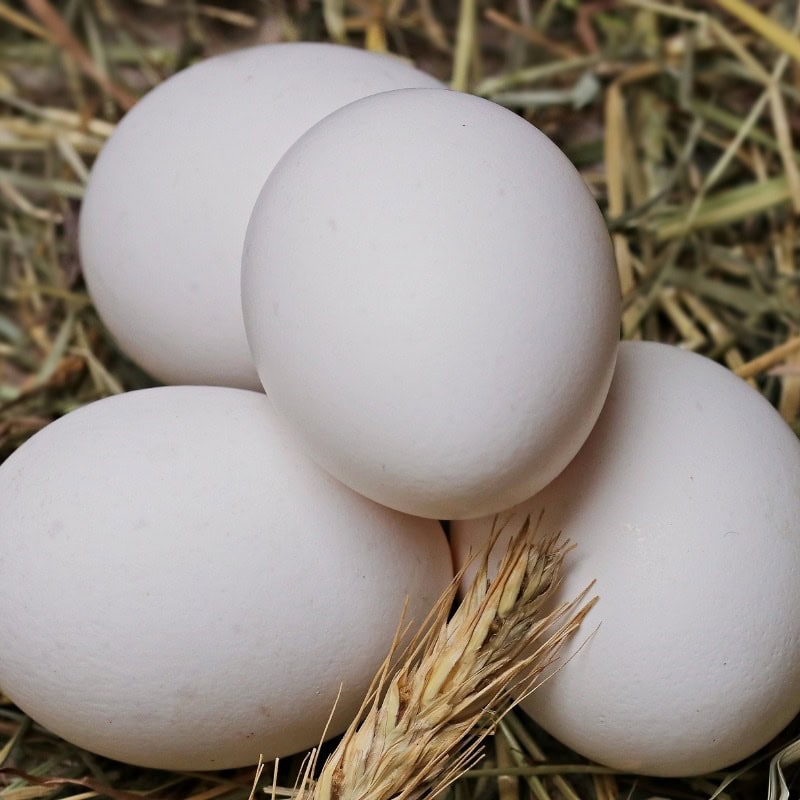
Feed Efficiency and Economical Aspects
If you’re budget-conscious, Leghorns might be an unbeatable pick for your coop. They efficiently convert feed into eggs, reducing overall costs per egg. Their adaptability and high egg-laying capacity make them a top choice for farmers seeking cost-effective production.
Commercial Egg Production
White leghorns are the most common breed used in commercial egg production due to their high egg-laying abilities, feed efficiency, and adaptability to various housing systems. Many of the eggs found in grocery stores come from leghorn hens raised in large-scale commercial operations.
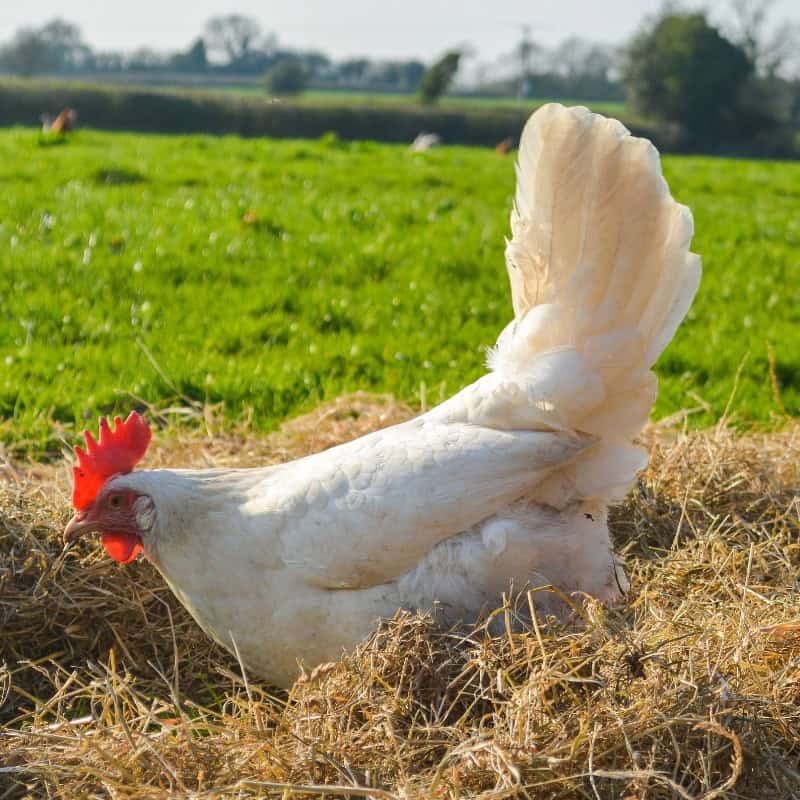
Caring for Leghorn Chickens
While leghorns are relatively low-maintenance birds, they do have some specific care requirements to keep them healthy and happy. Caring for leghorn chickens involves focusing on a few critical factors.
Housing and Coop Requirements
Leghorns require a secure, well-ventilated coop with adequate space for roosting, nesting, and feeding. Active birds love having lots of space to fly around and hunt for food. A minimum of 2-3 square feet per bird inside the coop and 4-5 square feet per bird in an outside run is recommended.
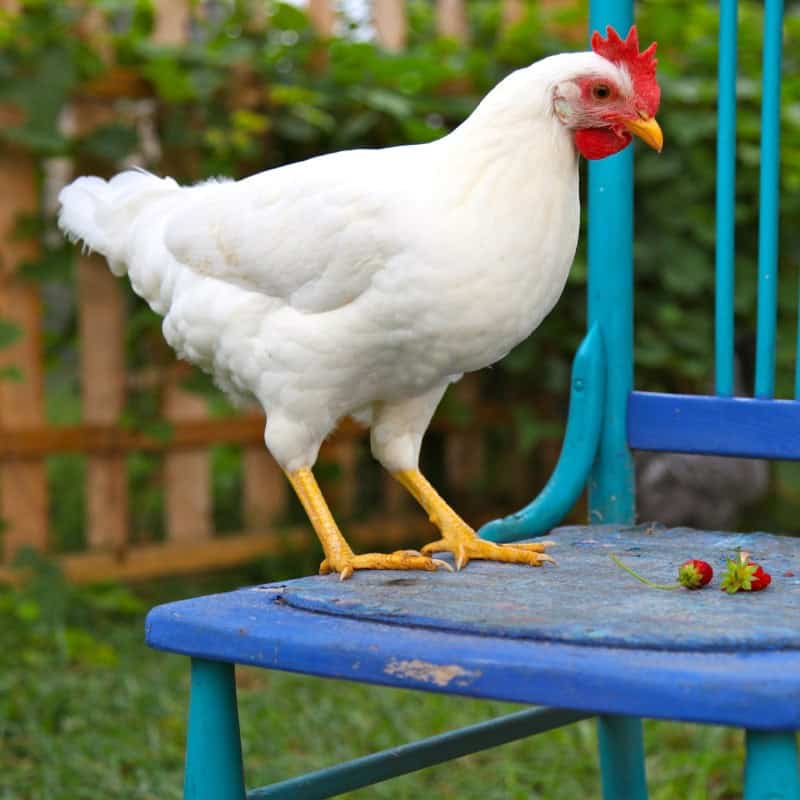
Feeding Leghorns
Leghorns thrive on a balanced diet for optimal health and egg production, typically requiring a layer feed with 16-18% protein and access to fresh water.
Supplementing their diet with calcium sources like oyster shells or crushed eggshells can promote strong eggshells. Additionally, providing a mix of small insects, greens, and seeds keeps them active and satisfied.
Climate Considerations
While leghorns are adaptable to various climates, their large combs and wattles make them susceptible to frostbite in extremely cold temperatures. In cooler regions, providing a draft-free coop and using petroleum jelly on combs and wattles can help protect against frostbite.
To prevent heat stress in scorching weather, make sure there’s ample shade and a way for air to circulate well.
Activity Level and Fencing Needs
Leghorns are lively and inquisitive creatures, relishing in foraging and investigating their environment. Their adept flying abilities necessitate taller fencing, typically ranging from 6 to 8 feet.
Alternatively, clipping flight feathers on one wing can deter escapes. Providing ample space for exploration and enrichment activities prevents boredom and discourages undesirable behaviours in Leghorns.
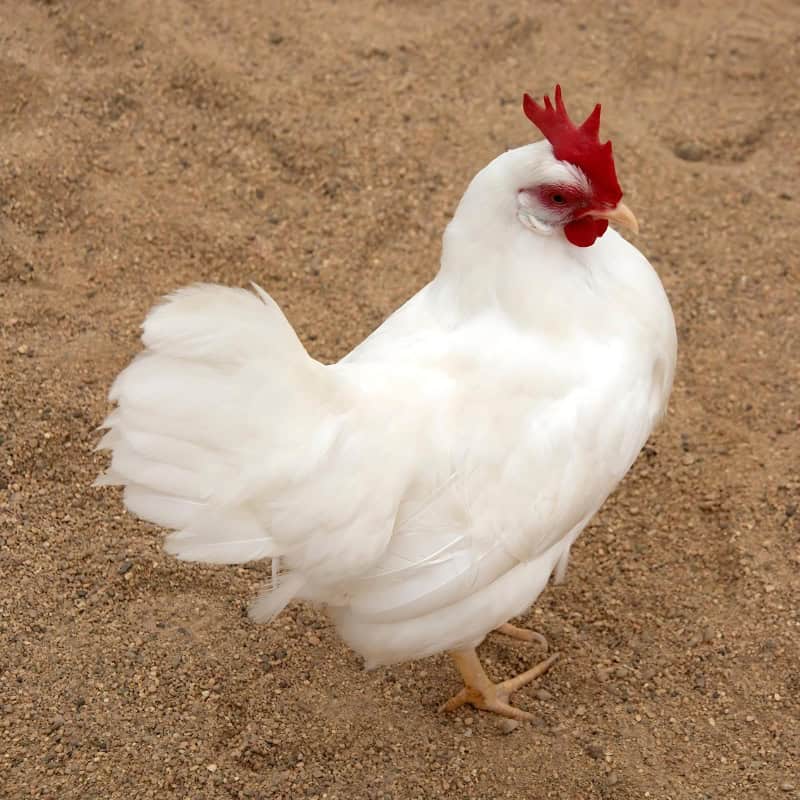
Key Takeaway:
The leghorn chicken, originating from Tuscany, Italy, is renowned for its prolific egg-laying abilities. This active breed requires specific care but rewards with up to 320 large white eggs annually.
FAQs in Relation to Leghorn Breed
Is Leghorn a cross breed?
No, the Leghorn is not a cross breed. Hailing from the rustic regions of Tuscany, this original breed carries a rich history with it.
What colour eggs do Leghorns lay?
Leghorns lay large white eggs consistently, making them a top choice of egg layers for any flock.
Are Leghorns suitable for your backyard chicken coop?
Ideal for your yard, they’re known for laying many eggs while keeping busy all day long.
Why are Leghorns not for beginners?
Their independent and flighty behaviour can be challenging for new chicken keepers to manage effectively.
Ian’s Wrap
Think of the leghorn breed as more than just chickens. They’re high-efficiency layers with smooth feathers and strikingly yellow legs. Starting out in the beautiful Tuscan countryside, Leghorn chickens have now found homes all around the globe.
The Leghorn breed brings so much personality to your backyard, whether they’re confidently exploring or adding a spark of character to the coop with their spirited ways. They lay copiously large white eggs that not only promise delicious breakfasts but are also an economically sound choice for any poultry enthusiast.
If you’ve been thinking about adding some zest to your yard with pets that won’t just lounge around but will contribute actively, then consider Leghorn chickens.



